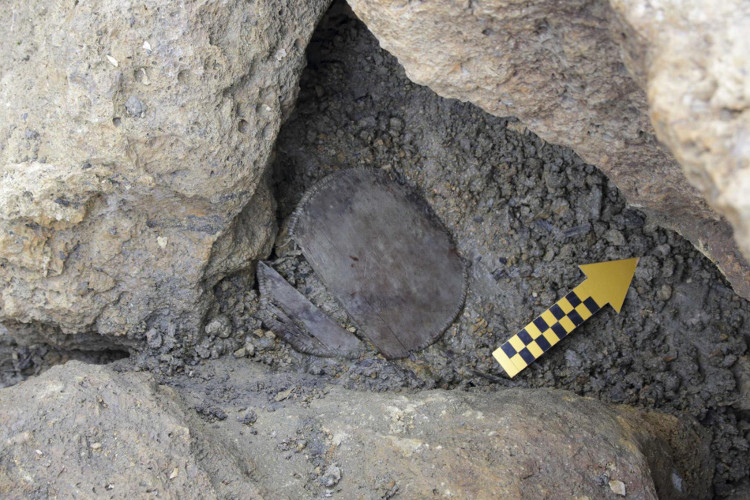History of ancient rice seeds can be rewritten by discovery in the Alps
About 3,500 years ago, a brave traveler had forgotten his food box on the mountain peak in the Swiss Alps.
Archaeologists discovered the wooden box when the thick ice on the top of the Lötschenpass was 2,650 meters high. Round wooden box made of Swiss pine and willow wooden brace.
They even discovered clues about the last items contained in the box, whereby a chemical analysis revealed the faint remnants of grains such as wheat and rye, possibly is an oatmeal soup.

The food box is found on the Apls range in Switzerland.
The important thing interesting from this new discovery is traces of grain. Armed with new chemical techniques, archaeologists can now analyze the residue of food and drinks - like animal fat and milk - that remain in ancient seemingly empty jars. However, it is rare to find fat from cereals on artifacts, although grains such as wheat, barley and rye are important for agricultural production.
Dr. André Colonese, a paleontologist at York University in the UK, said: "Although no evidence of milk was found, we found these phenol lipids , which are abundant in good wheat bran. Rye and has never been previously reported in an archeological artifact. "
"This is an extraordinary discovery if you look at the perspective of all domesticated crops , wheat is the most popular plant in the world and the most important food source for humans, The core element of modern cuisine, it marks the first time scientists use biological formulas to detect cereals dating from the Bronze Age and will allow scientists to learn to study together the origin of prehistoric cultivation '.
The team combined molecular analysis and using a modern technique called gas chromatography is often applied to ceramic artifacts to determine lipids and proteins. Over the past 30 years, thousands of ceramic artifacts from Europe have been analyzed for their molecular content, largely as evidence of milk and meat products, but there is almost no evidence of enlightenment. the cup.

Traces of grain found in food containers can be the basis for scientists to study the beginning of agriculture in Europe.
Dr Jessica Hendy of Max Plak's Institute of Humanities and History Sciences said: "Evidence of cereals comes from the discovery of lipids, but also from preserved proteins. This analysis can tell us. "The box is not only one, but there are also two types of cereals: barley and rye. This is also strong evidence that cereals were once transported through this peak."
Dr. Hendy stressed that the new discovery also allows us to study together when and where this important food crop spread across Europe .
Dr. Jessica Hendy stressed that "The trace of grain also helps us discover the start of agriculture in Europe."
- Test results: 'Thanh Den ancient rice' is modern rice
- Why does rice for overnight change red?
- Unexpected record of cotton of thousand grains
- Journey of domesticated water rice
- New discovery about the origin of rice
- Symbiogenics: Strategies to mitigate climate change impacts on rice
- Stop studying 'ancient rice' Thanh Den
- Why do people need to eat rice every day?
- The true origin of the Jerusalem Wall
- Why should rice bran be eaten instead of white rice?
- Very simple way to cook rice without eating fat
- Discovering the oldest weapon ever appeared in North America
 Discovered an ancient centipede fossil 99 million years old
Discovered an ancient centipede fossil 99 million years old Discovered bat-like dinosaurs in China
Discovered bat-like dinosaurs in China Discovered a 200-year-old bronze cannon of the coast
Discovered a 200-year-old bronze cannon of the coast Discover 305 million-year-old spider fossils
Discover 305 million-year-old spider fossils